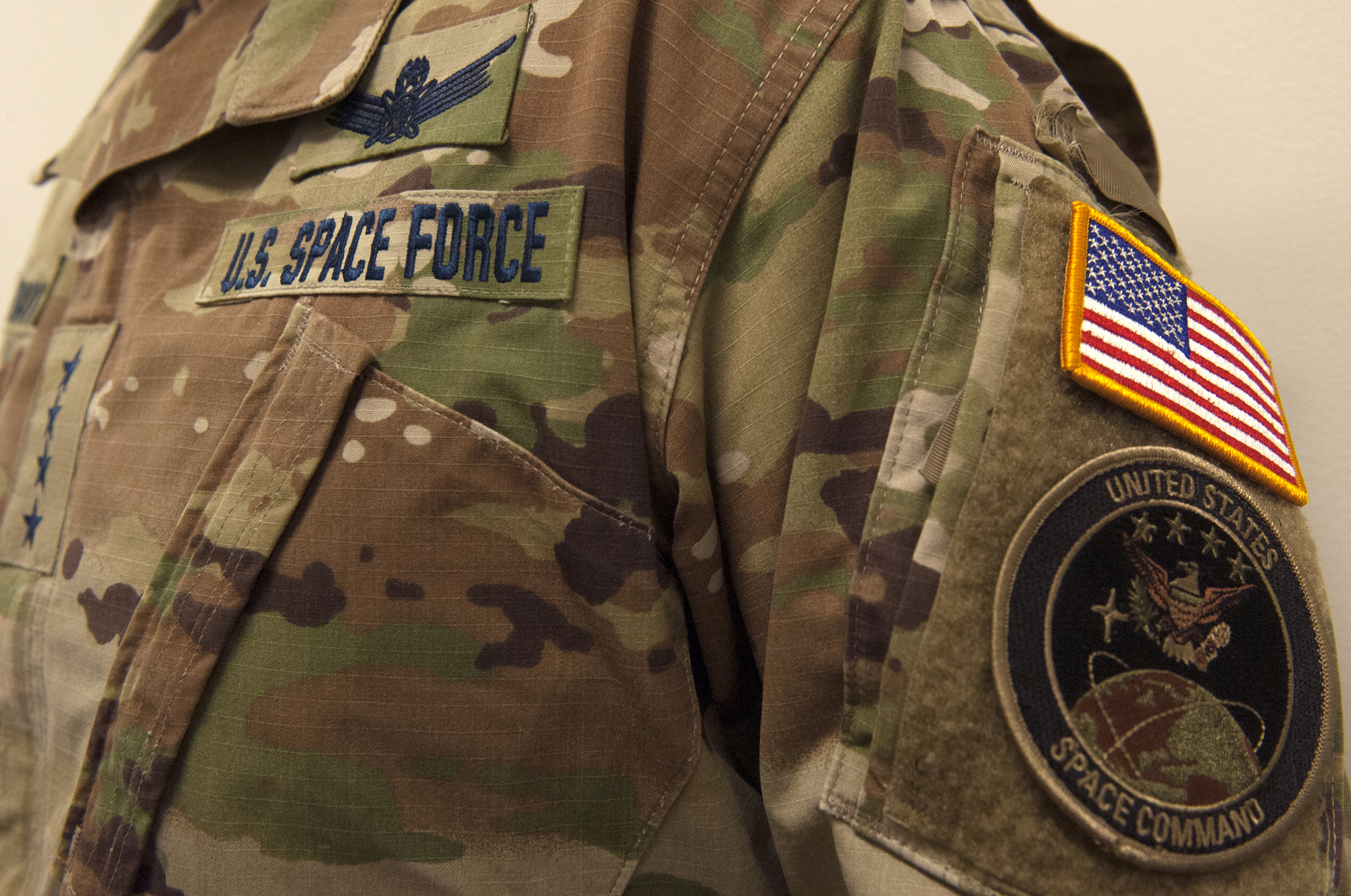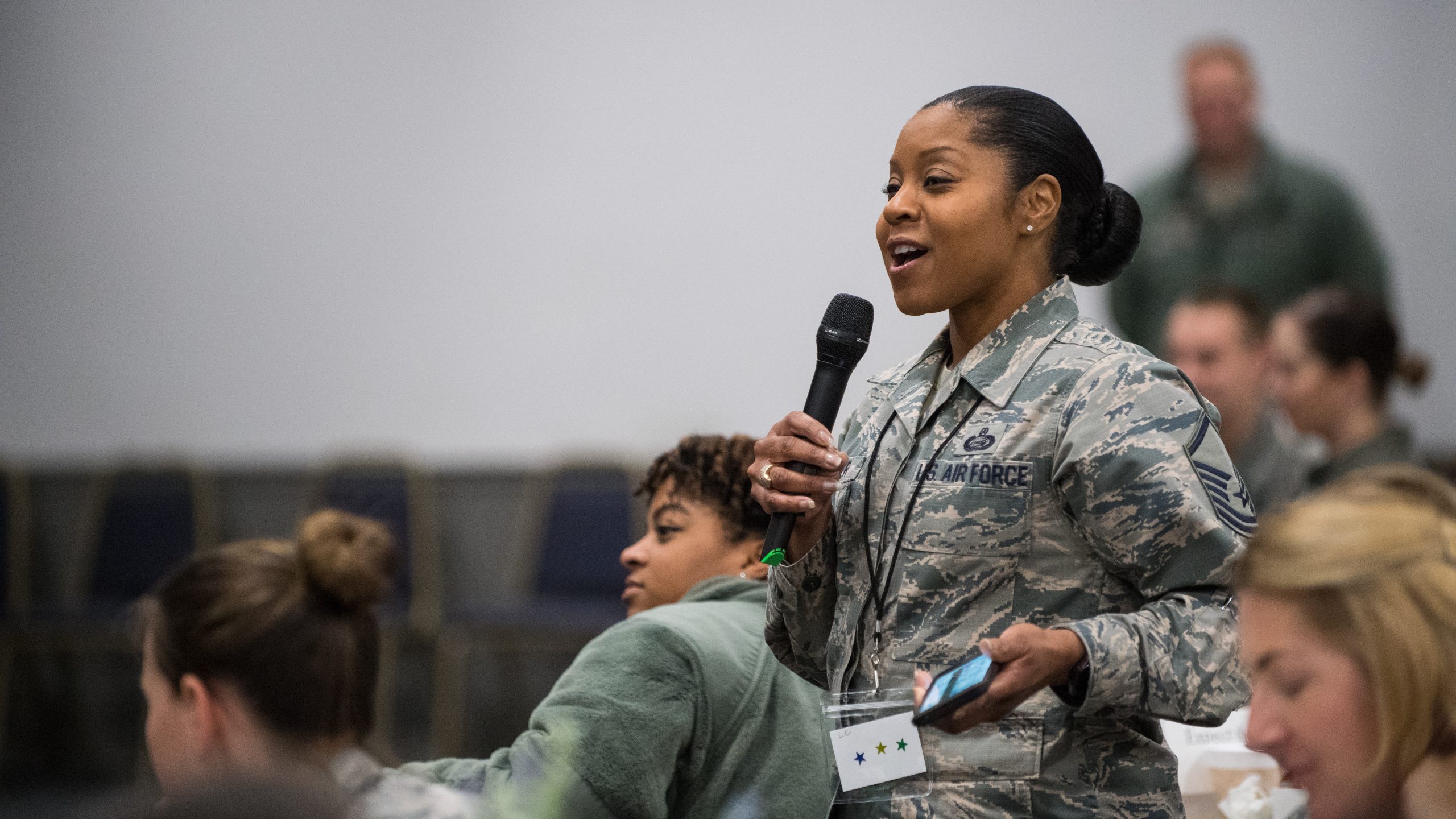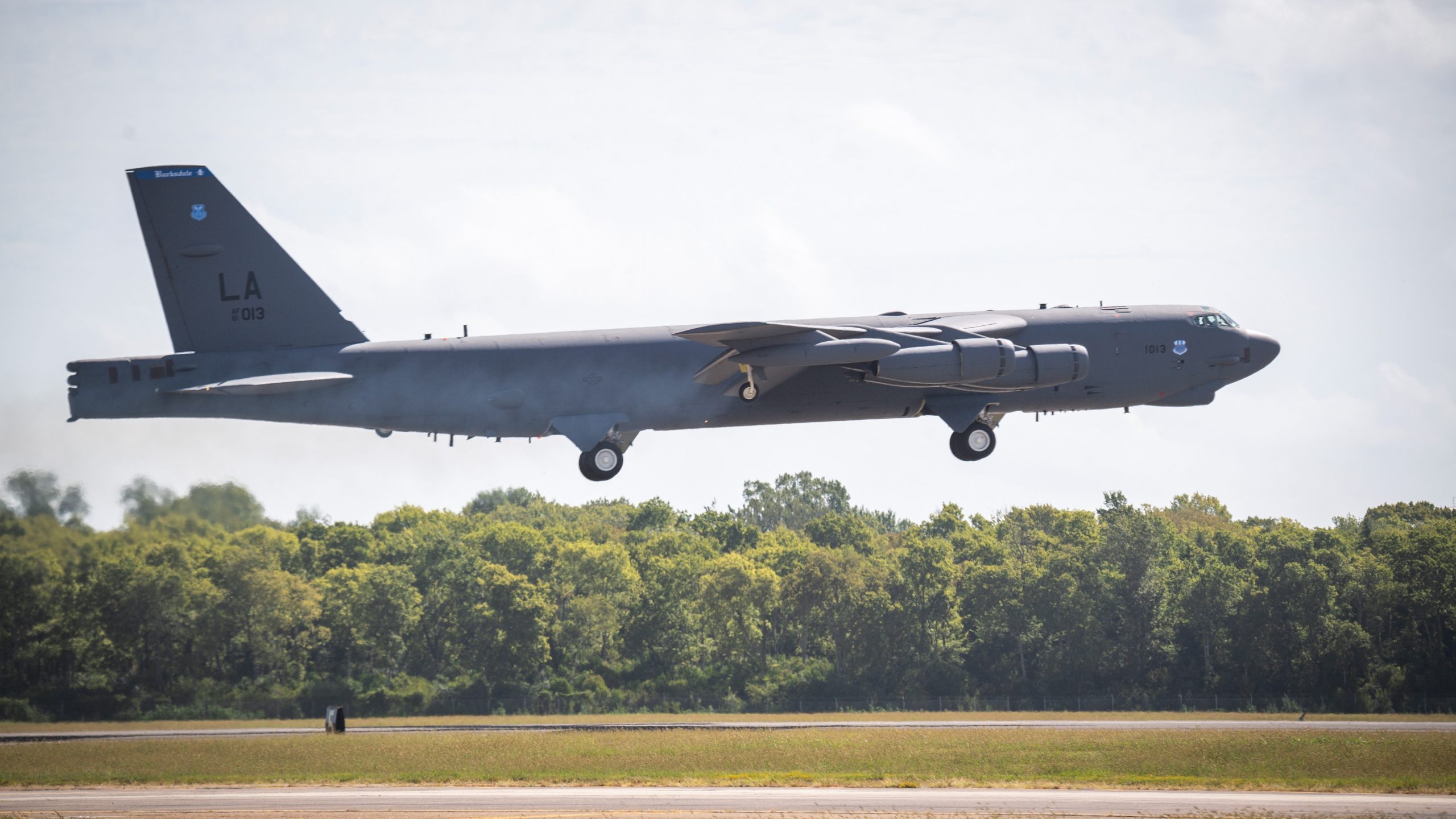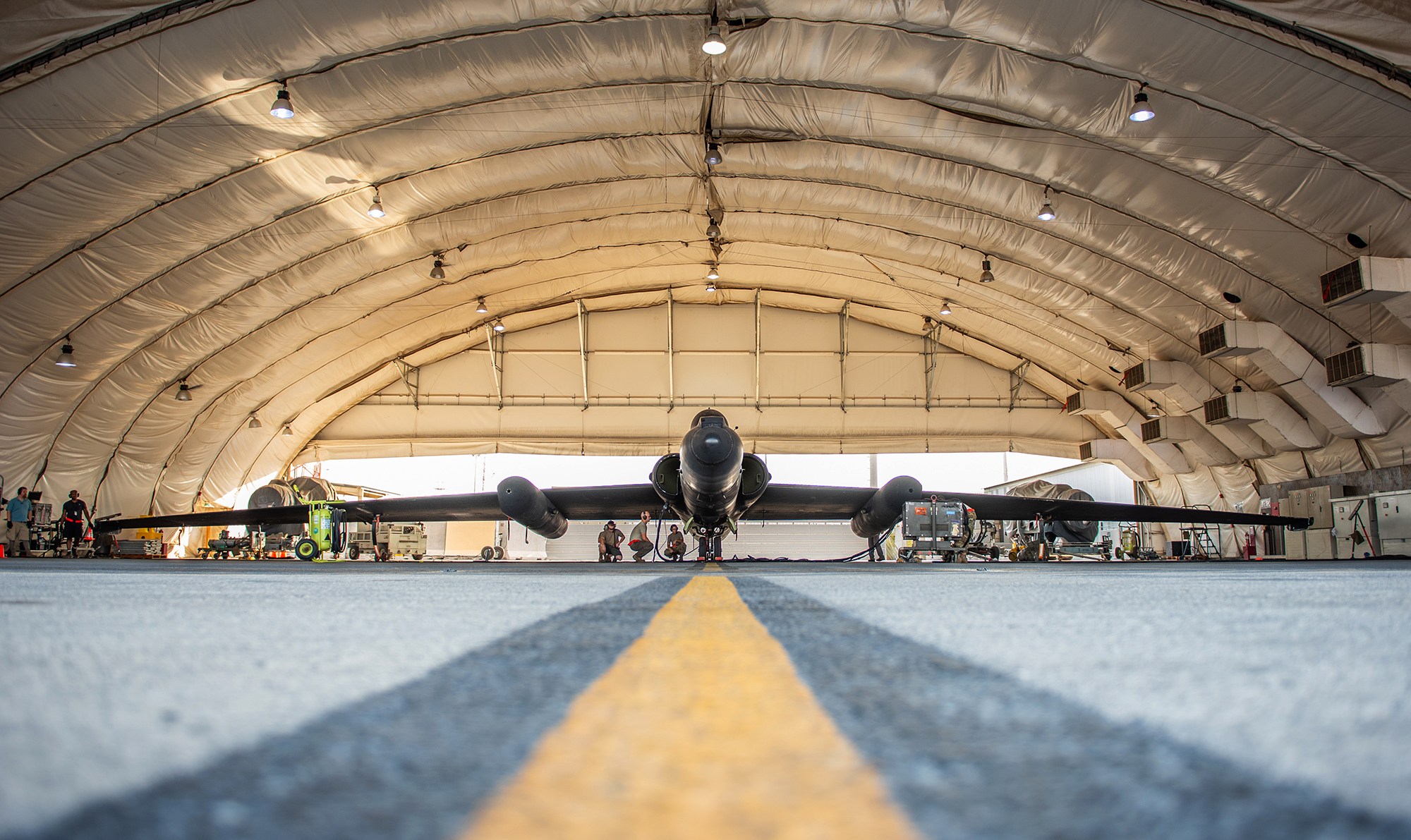Members of the newly created military service focused on war fighting in space will officially wear a camouflage pattern developed for war in Afghanistan.
The Department of the Air Force on Aug. 24 released a memorandum stating that the Operational Camouflage Pattern is mandatory for all members of the Space Force beginning April 1, the Air Force’s date to finally phase out the Airman Battle Uniform in favor of the OCP pattern. Space Force members will wear “Space Blue” name tape, Space Force badge, and grade insignia, with a full-color U.S. flag, according to the memorandum. Space Force occupational badges are mandatory, with optional occupational and qualification badges and patches.
“Our uniforms are the first visual cue of our identity as a service,” Chief Master Sgt. Roger A. Towberman, senior enlisted advisor of the Space Force, said in the release. “Adopting the OCP worn in the joint environment reflects our role in the joint warfighting effort, and we incorporated Space Force-specific colors and configuration to establish our own independent identity.”
Morale patches are not authorized on the OCP uniform, and there’s a maximum of two patches to be worn on the left sleeve and one on the right. Following the Air Force’s example, T-shirts and boots will be Coyote Brown. Members will wear patrol caps, with name tapes attached on the back, and officers will wear the rank insignia on the front.
The new memorandum, which largely follows Air Force guidance outside of the “Space Blue” accoutrements, only addresses the use of the OCP uniform. No similar guidance for dress uniforms has been released.
Towberman, during an Aug. 26 appearance at the virtual Air Force Sergeants Association conference, said those entering Basic Military Training to join the Space Force will begin receiving their blue name tapes on Oct. 7, and though the trainees will largely follow Air Force BMT, there will be some adjustments.










